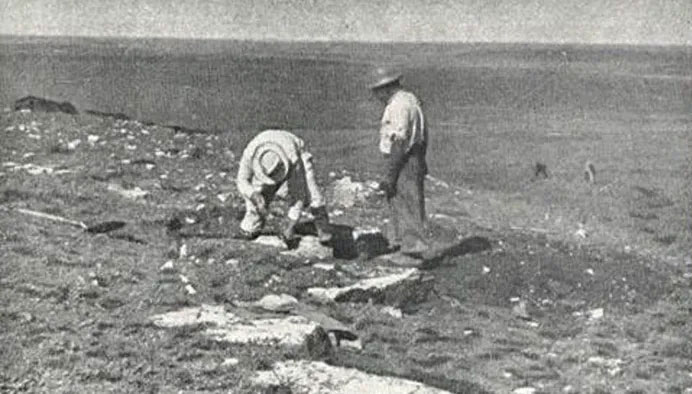Scientists have finally rediscovered a long-lost fossil site in Brazil, initially identified by researchers 70 years ago but subsequently lost due to the inability to record its exact coordinates.
The unique geological conditions at this site have preserved a treasure trove of paleontological finds for a long time. Rediscovering it could shed light on one of the largest extinction events in Earth’s history.

Researchers discovered the fossil treasure site in 1951 but lost track of it and recently found it again.
The rediscovered site, known as Cerro Chato, is located near the border of Brazil and Uruguay in the southern state of Rio Grande do Sul. Approximately 260 million years ago, at the end of the Permian period (299 million to 251 million years ago), the conditions in this area were ideal for preserving dead organisms. As a result, many rock layers at Cerro Chato are filled with exquisite fossils, particularly of plants.
Paleontologists first discovered Cerro Chato in 1951 and were thrilled by its exceptionally well-preserved Permian relics. Unfortunately, the researchers could not accurately record the site’s geographical coordinates, and when they attempted to return to the Permian treasure, they were unable to locate it.
After numerous attempts to track it down, the research team abandoned the search and declared this archaeological site lost. However, a new group of researchers took over and successfully found the lost location in 2019.
Joseline Manfroi, a paleontologist at the University of Vale do Taquari in Rio Grande do Sul, stated: “For decades, the geographical location of this area was unknown. This motivated our team to conduct a ‘treasure hunt.’ Fortunately, after a long time, we have the opportunity to continue the history through the newly rediscovered fossil record.”
To date, over 100 fossils—primarily of plants, along with some fish and mollusks—have been discovered at Cerro Chato by the original team and co-authors of the new study. Researchers noted that some of the fossilized plants are ancestors of today’s conifer and fern species.
The plant fossils at Cerro Chato may help researchers better understand the severe climate changes occurring at the end of the Permian period, which triggered an extinction event that wiped out approximately 90% of life on Earth. The research team published this discovery online on May 15 in the journal Paleodest of the Brazilian Paleontological Society in both English and Portuguese.


















































